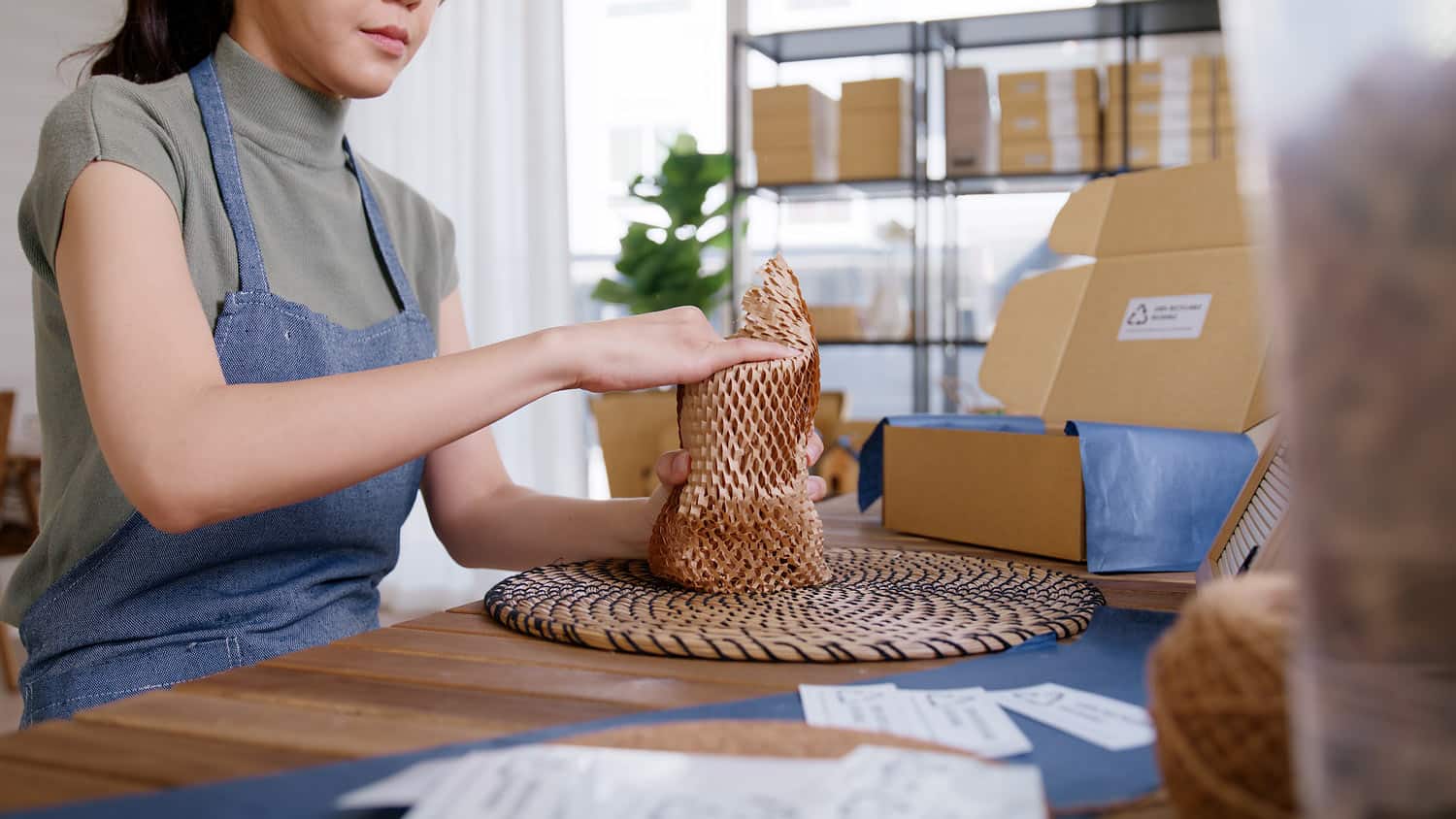Types of Wrapping Paper: A Guide to Choosing the Best Option
A Complete Guide for the Conscious Mover
Types of Wrapping Paper: A Guide to Choosing the Best Option

Types of Wrapping Paper: A Guide to Choosing the Best Option
. Honeycomb Wrapping Paper: The Eco-Friendly Choice
Honeycomb wrapping paper is a biodegradable and recyclable alternative to traditional bubble wrap and plastic packaging. Made from kraft paper, it features a unique hexagonal structure that expands when stretched, creating a cushioning effect. This type of wrapping paper is ideal for protecting fragile items such as glassware, ceramics, and electronics during shipping and storage. Businesses and eco-conscious individuals are increasingly adopting honeycomb wrapping paper due to its sustainability and effectiveness in reducing plastic waste.
2. Kraft Wrapping Paper
Kraft paper is another environmentally friendly wrapping material. Made from unbleached wood pulp, it is durable, recyclable, and widely used for packaging and gift wrapping. Kraft wrapping paper is available in natural brown or dyed colors and can be customized with stamps or prints for a personalized touch.
3. Glossy Wrapping Paper
Glossy wrapping paper is a popular choice for gifts, featuring a smooth, shiny surface that enhances the visual appeal. While it is available in various colors and patterns, glossy wrapping paper is often coated with plastic, making it less eco-friendly compared to alternatives like honeycomb wrapping paper or kraft paper.
4. Tissue Paper
Tissue paper is a delicate and lightweight wrapping material commonly used for decorative purposes. It is ideal for wrapping clothing, accessories, and small gift items. Although tissue paper is biodegradable, it doesn’t offer much protection for fragile objects, making honeycomb wrapping paper a better option for shipping delicate items.
5. Foil Wrapping Paper
Foil wrapping paper has a metallic, reflective surface that gives gifts an elegant and luxurious look. It is often used for special occasions like weddings, anniversaries, and holiday gifts. However, foil wrapping paper is not recyclable due to its metallic coating, making it a less sustainable option compared to honeycomb wrapping paper and kraft paper.
6. Fabric Wrapping (Furoshiki)
Furoshiki is a traditional Japanese wrapping method using fabric instead of paper. This eco-friendly option is reusable and versatile, making it a great alternative to disposable wrapping paper. While not as protective as honeycomb wrapping paper, fabric wraps are stylish and sustainable for gift-giving.
Why Choose Honeycomb Wrapping Paper?
Among all the options available, honeycomb wrapping paper stands out as a top choice for those looking for both protection and sustainability. Here’s why it’s becoming increasingly popular:
Eco-Friendly: 100% recyclable and biodegradable, reducing plastic waste.
Protective: The honeycomb structure absorbs shocks, making it perfect for shipping fragile items.
Lightweight: Reduces shipping costs without compromising on safety.
Aesthetic Appeal: Adds a unique, modern look to packaging, enhancing the unboxing experience.
Final Thoughts
Choosing the right wrapping paper depends on your needs, whether it’s for gift presentation, protection, or sustainability. While glossy and foil papers offer aesthetic appeal, honeycomb wrapping paper is the best choice for those who prioritize both functionality and environmental impact. By switching to eco-friendly wrapping solutions, you can contribute to a greener planet while ensuring your items are well-protected.
Are you ready to make the switch to honeycomb wrapping paper? Consider incorporating it into your packaging and gifting needs today!

